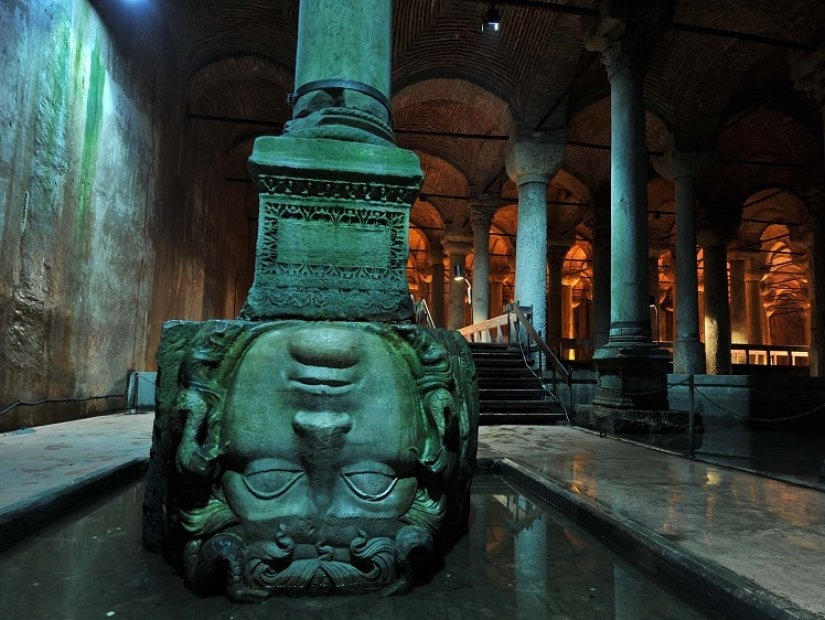Blog
Most Mysterious Places in Turkey
Most Mysterious Places in Turkey
Most Mysterious Places in Turkey
Turkey, with its unique location, has witnessed the rise and fall of empires and civilizations throughout history. So, it’s no surprise that it houses a variety of interesting and mysterious places. Now, let’s take a look at a few of the most mysterious places in Turkey.
Mystery of the Underground: Medusa
The Basilica Cistern, located southwest of Hagia Sophia, is one of Istanbul's most beautiful ancient structures. Located in the northwest corner of the cistern, the bases of two columns reuse blocks carved with the visage of Medusa. Heads are utilized casually as column bases, one upside down and the other tilted to the side. Both their positioning and their origin remain a mystery up till now.
Medusa, also known as Gorgo in Greek mythology, was one of the three monstrous Gorgons, who were characterized as winged human beings with live poisonous snakes for hair. Those who looked into her eyes became stone.
According to one theory, Gorgona paintings and sculptures were utilized to protect great constructions and significant areas, which is why the Medusa's head was put there.
Dungeons of the Seven Towers
The Yedikule Fortress (Turkish: Yedikule Hisar or Yedikule Zindanları; meaning "Fortress of the Seven Towers" or "Dungeons of the Seven Towers," respectively) is a fortified historic landmark in Istanbul.
The seven-tower complex was built in 1458 on the orders of Ottoman Sultan Mehmed II, and it encloses a section of the ancient walls of Constantinople, including the two twin towers that originally formed the triumphal Golden Gate built by Roman Emperors Theodosius I and Theodosius II.
Throughout its history, the stronghold was recognized as the site of a fearsome royal prison, which held prominent figures, and the related intrigue grabbed the public's imagination in numerous tales, stories, and the arts.
The Gateway to Hell: The Hierapolis Ploutonion
The Hierapolis Ploutonion is a holy sanctuary in Hierapolis, an old Greco-Roman-Byzantine city in classical Phrygia, now in the Turkish province of Denizli.
The sanctuary was built over a natural cave that released hot waters and deadly volcanic carbon dioxide, which emanated as a suffocating invisible mist said to have been sent by Pluto, the god of the underworld. When in reality it was the gas from the cave collected on the arena floor, where it grew in concentration during the night, becoming an asphyxiating CO2 "lake."
The Galli, eunuch priests of the goddess Cybele, utilized the cave for ceremonies, descending through the "portal to hell" into the chamber to display their divine protection and commit sacrifices.


